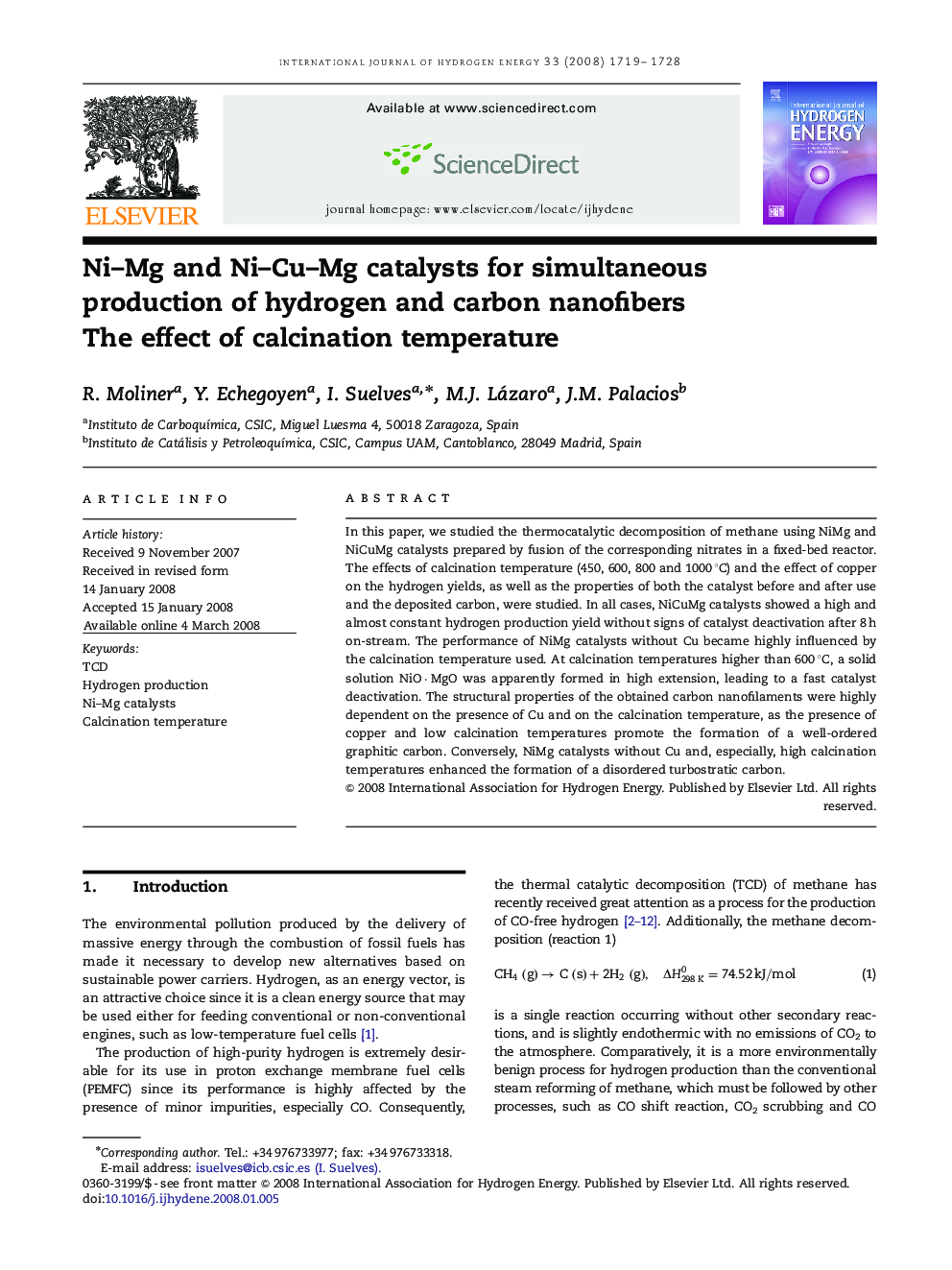| Article ID | Journal | Published Year | Pages | File Type |
|---|---|---|---|---|
| 1283736 | International Journal of Hydrogen Energy | 2008 | 10 Pages |
In this paper, we studied the thermocatalytic decomposition of methane using NiMg and NiCuMg catalysts prepared by fusion of the corresponding nitrates in a fixed-bed reactor. The effects of calcination temperature (450, 600, 800 and 1000 °C) and the effect of copper on the hydrogen yields, as well as the properties of both the catalyst before and after use and the deposited carbon, were studied. In all cases, NiCuMg catalysts showed a high and almost constant hydrogen production yield without signs of catalyst deactivation after 8 h on-stream. The performance of NiMg catalysts without Cu became highly influenced by the calcination temperature used. At calcination temperatures higher than 600 °C, a solid solution NiO·MgONiO·MgO was apparently formed in high extension, leading to a fast catalyst deactivation. The structural properties of the obtained carbon nanofilaments were highly dependent on the presence of Cu and on the calcination temperature, as the presence of copper and low calcination temperatures promote the formation of a well-ordered graphitic carbon. Conversely, NiMg catalysts without Cu and, especially, high calcination temperatures enhanced the formation of a disordered turbostratic carbon.
